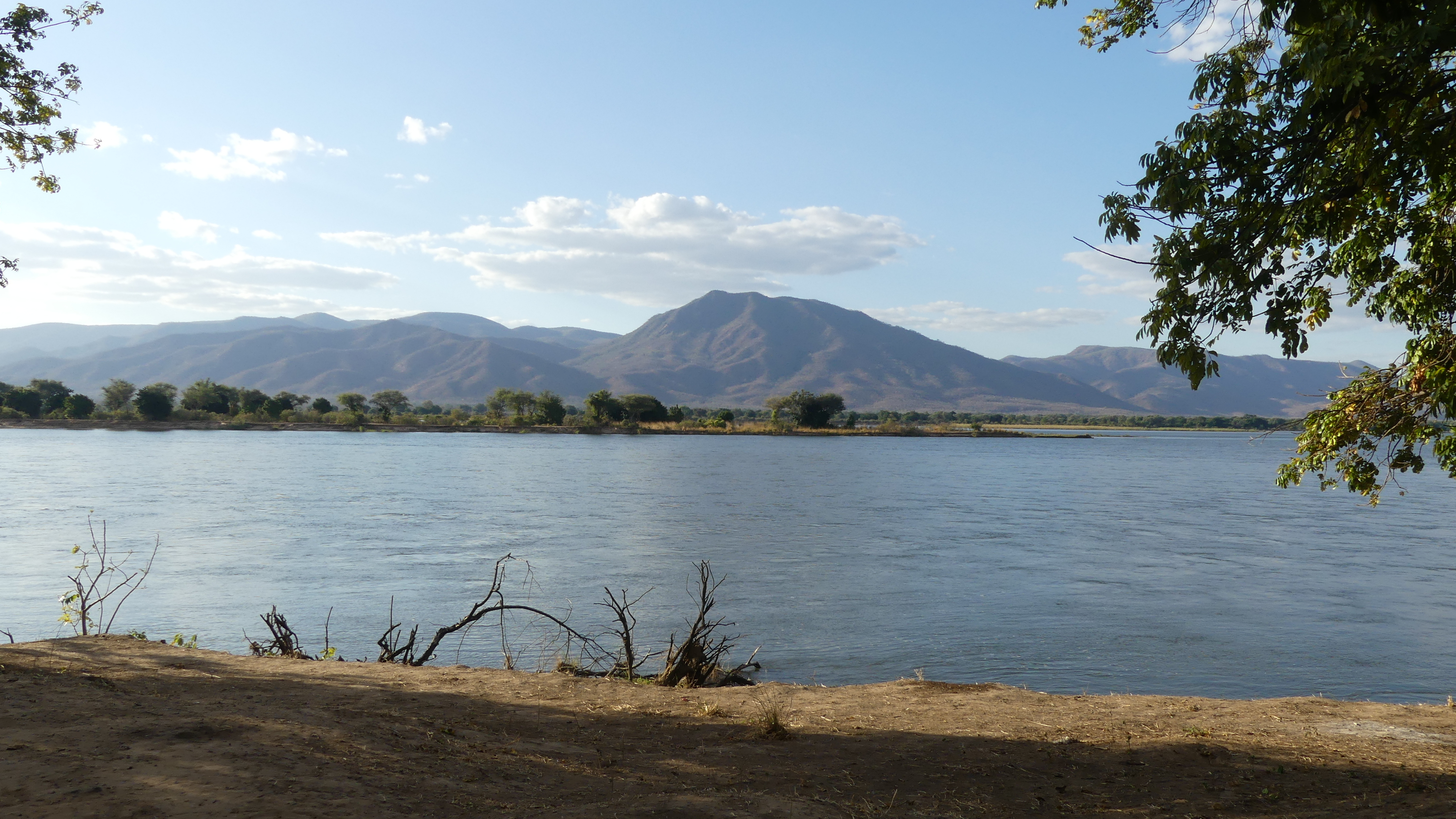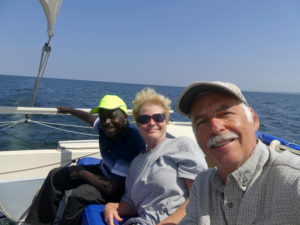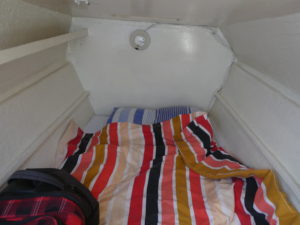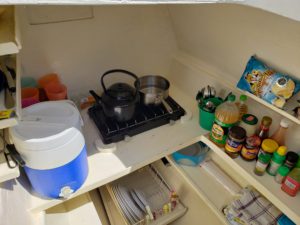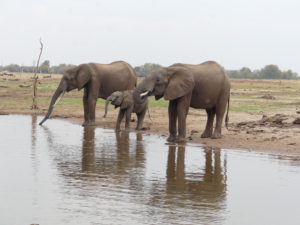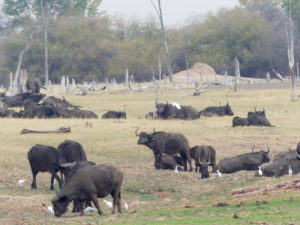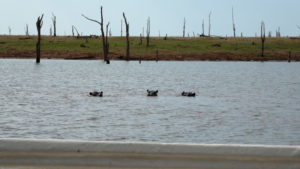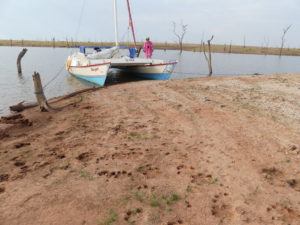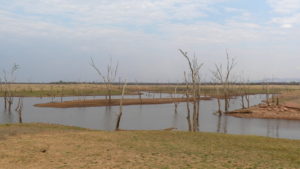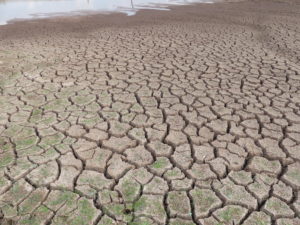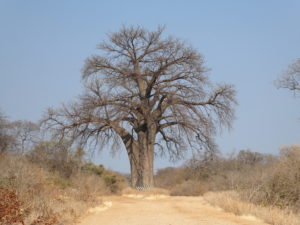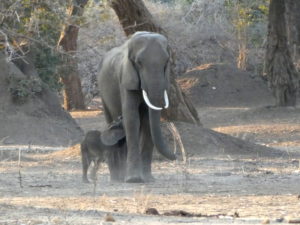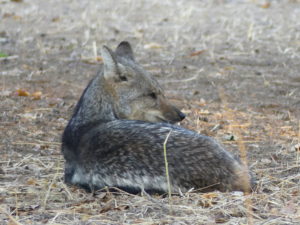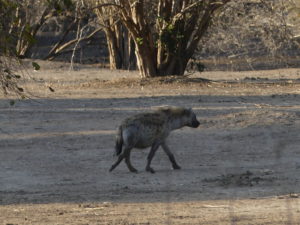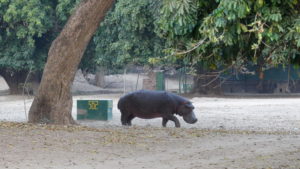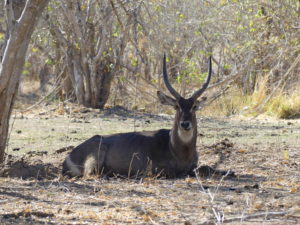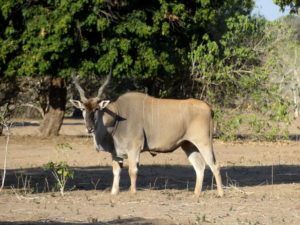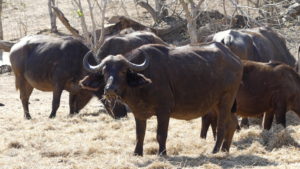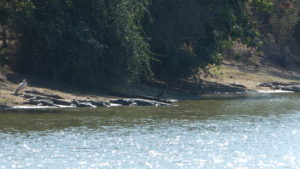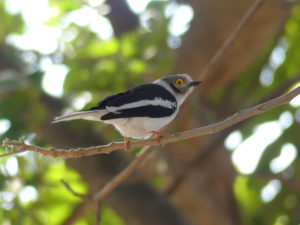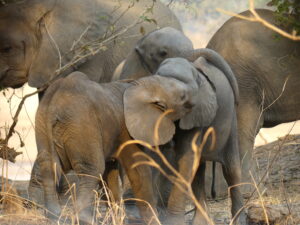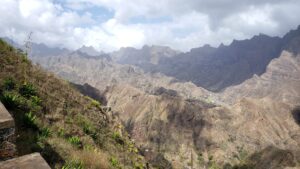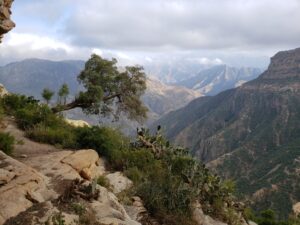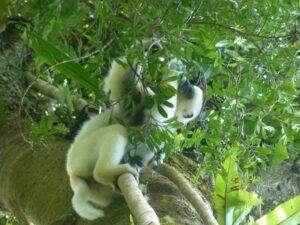During our drive through Zimbabwe we lingered at two of its most notable parks, both along the Zambezi River: Matusadona at the edge of Lake Kariba and Mana Pools.
Sailing to Matusadona on Lake Kariba
Sailing for three days on Lake Kariba with a Zimbabwe captain was a highlight of our four months in southern Africa. The huge lake – by volume the largest in the world, some 220 by 40 kilometers – dates from the damming of the Zambezi River in the late 1950s, downstream from Victoria Falls. It’s now at historic lows due to the drought conditions in the area.
We might have hired one of the many houseboats available to cruise the lake, floating buildings that can accommodate from six to a zillion people depending on their size. But a catamaran sailboat seemed a lot more thrilling…and challenging.
So that’s what led us to be sailing placidly and happily across Lake Kariba with Roger, our captain/guide for three days. One of the first black boat owners from the time of independence, Roger was also the best of company, noting much about the challenging realities of life in today’s Zimbabwe as well as the natural world we were slowly sliding through.
We slept on narrow double beds within the pods of the catamaran.
The bed in one pod shared space with the galley (kitchen). Though quite small, it was outfitted with all we needed to cook some elaborate meals on board together with Roger.
The other bed shared the second pod with the narrow chemical toilet. Roger slept up on deck and discreetly wandered off on land for the open air toilet.
As pleasant and adventurous as were the conditions on board, the landscape and wildlife were the principal attraction. The turquoise hills circling the lake played hide and seek in the misty sky. Solitary wooded islands floated by.
Large herds of wildlife emerged from the forests of renowned Matusadona National Park to feed on marshy grasses or drink.
At one stop, when we put in to shore at lunchtime, three of the many elephants we passed drank deeply just a few meters away from our boat.
A massive herd of African buffalo grazed nearby, attended by cattle egrets
Lively hippo families greeted us when we eased into shore for the night.
At one night’s mooring, we anchored alongside the squishy imprints of hippos who had come ashore previously. During the night, winds battered the boat, shaking us awake as ropes strained at the anchors.
Near land, the low water conditions became much more obvious. One night we moored at the junction of one of the many streams that flow from the enclosing hills into Lake Kariba. In normal water conditions, even nearby mounds 10 meters higher would be completely underwater.
We walked across dried mud left behind by the low waters. Old elephant and hippo prints looked like the fossilized imprint of dinosaurs in this clay.
The eerie ghosts of dead trees gathered around us in the bronzed evening light of sunset and the crisp dawns. We had to move slowly toward our moorings because the low waters kept us just above submerged stumps and shorter tree trunks as we passed.
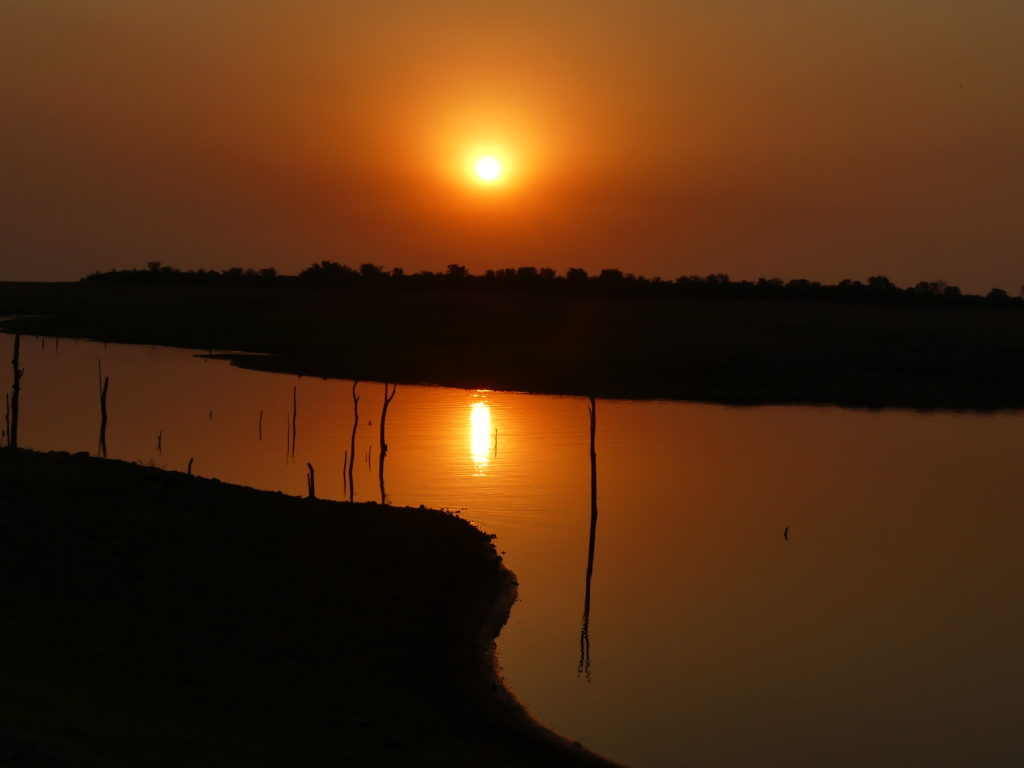
Camping with the wildlife at Mana Pools
The last wildlife reserve we visited during our four month trip across southern Africa was Zimbabwe’s renowned Mana Pools area on the Zambezi River.
Reaching the park was not easy: we drove for hours along a very rough access road, passing dry streams and sere trees. One section gave us our last look at the baobab trees we love, including this one left in the middle of the road.
But where we ended was worth it. Here is the view over the Zambezi River from our tent at Mana Pools, looking over to Zambia and its hills.

The river separates the two countries of Zambia and Zimbabwe. Years of mismanagement by Zimbabwe’s leaders has resulted in the development of grand resorts on the Zambian side but few on the Zimbabwe side. We were happier where we were, looking out at Zambia’s hills, though we thought that the fees at Mana Pools were extraordinarily high given the conditions.
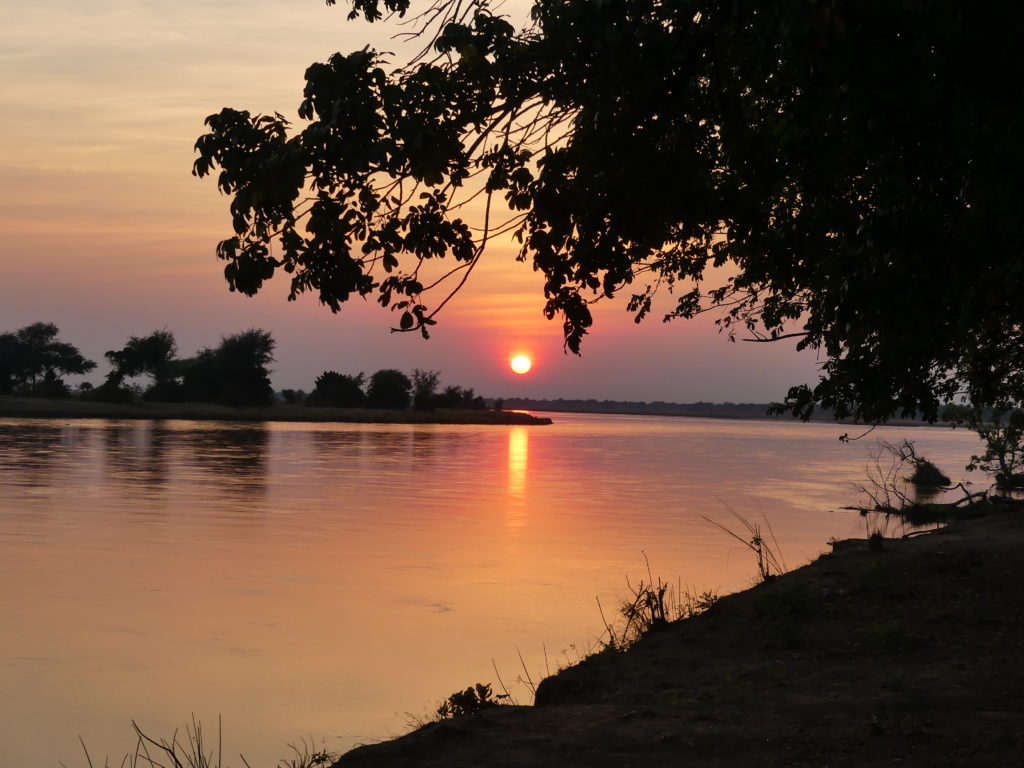
Sunrise along the Zambezi River, looking more like a sunset…and one of the finest we saw during our whole trip.
What’s more, due to the prolonged drought, the reserve was not in its customary condition, when we would have seen water-filled pools throughout the park. The wildlife was suffering from lack of normal nutrition: we found scrawny elephants, antelope with grey coats and – an even rarer sighting – carcasses of animals who could not survive.
With the lack of fresh leaves on their favorite trees, the many elephants we saw looked so thin to us from malnutrition. But there were many babies from the past year. This mama and baby passed through our campsite regularly, with the baby often trying to keep up and drink some milk at the same time.
Because of the river, however shallow it was in spots, the animals could still drink and eat some water plants. That’s where they gathered and we could find them.
Or passing through our campsite to the river – prey and predators alike. We needed to stay alert.
One of our favorite sightings were the jackals, who preferred hanging about campgrounds as a safety measure against other predators. This was a new animal for us too: the side-striped jackal (it does have a black stripe on its side) instead of our frequent guest elsewhere, the black backed jackal.
Though we often heard them, we only saw a few hyenas during our whole trip, as they are nocturnal. Early one morning, as we left the campsite, we spotted this Spotted Hyena heading toward its resting spot. Here, we also heard lions thrumming at night in the nearby bush.
Hippos often visited the campgrounds when we stayed near a river…here too. They are NOT animals you want to come upon in the night, nor the lions or crocodiles or the, well, long list of others. Need to pee? Use your flashlight to look carefully about and stick close to the tent.
A striking male waterbuck, chewing things over near our campsite.
Mana Pools was our last chance to see elands, and we had not seen many since South Africa.
Several impressive bull elands like this one, along with younger ones and some females, also hung about near the campgrounds.
Messy eaters – and dangerous individually – these African buffalo also liked a grassy area near us. Even in the jeep we steered far from these guys.
We spent quite a while during our safari trips at one of the few pools now in Mana Pools – barely a kilometer from our campground – here in the morning light. It was one of the best spots for sighting birds…and elephants.
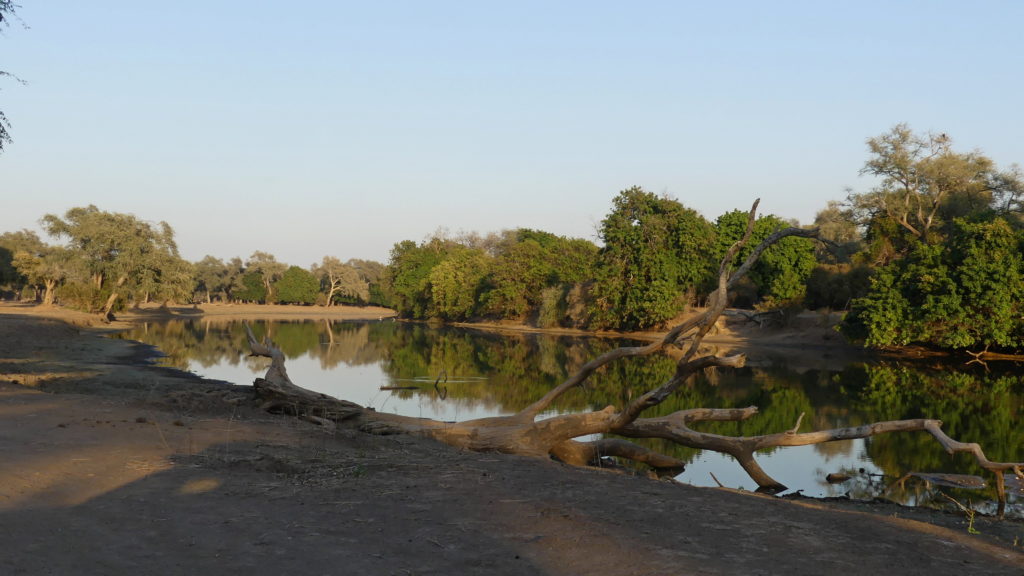
The same pool had attracted hundreds of crocodiles whom we saw sunbathing on its banks in the afternoon. We couldn’t figure out what they might be eating in that tightly packed pond.
The birdlife is normally plentiful, so birdwatching groups flock to Mana Pools. This white crested helmet shrike was one of a large group that swept over our tent.
Another great spot for seeing the birds was this gloriously lit, marshy backwater of the Zambezi River. In the distance are the hills of Zambia. Half way across, you can just detect a small herd of elephants drinking and feeding.

(To enlarge any picture above, click on it. Also, for more pictures from Zimbabwe, CLICK HERE to view the slideshow at the end of the itinerary page.)


